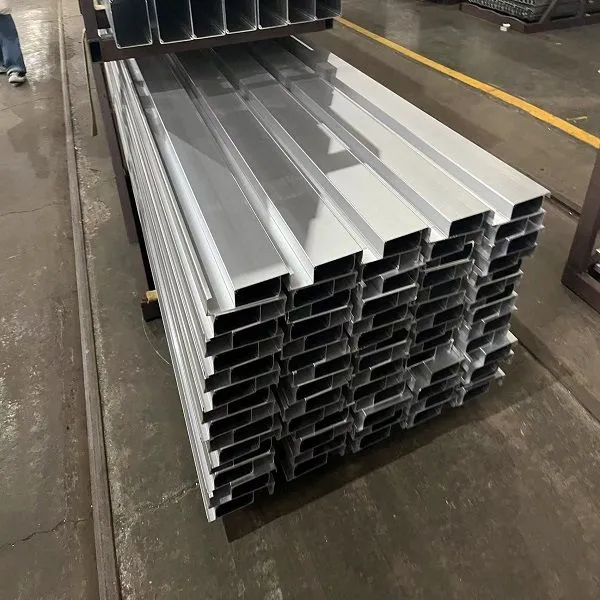- NEWS
- Is Aluminum a Metal or Metalloid?
Is Aluminum a Metal or Metalloid?
Aluminum, the third most abundant element in the Earth’s crust, has sparked debates about its classification due to its unique properties. However, scientific consensus unequivocally categorizes aluminum as a metal, specifically a post-transition metal. This article delves into its metallic characteristics, practical applications such as aluminum roof panels and aluminum awnings, and the transformative role of aluminum alloy in modern engineering.

1. Aluminum’s Metallic Properties
Aluminum (atomic symbol: Al) exhibits definitive traits of metals:
High conductivity: With 60% of copper’s electrical conductivity, aluminum is widely used in power transmission lines. Its thermal conductivity also makes it ideal for heat sinks in electronics.
Malleability and ductility: Aluminum can be rolled into sheets as thin as 0.006 mm for packaging foil or shaped into robust aluminum roof panels for construction.
Corrosion resistance: Unlike iron, aluminum forms a self-repairing oxide layer when exposed to air, preventing rust. This property is critical for aluminum awnings exposed to rain and humidity.
Low density: At 2.7 g/cm³, aluminum is lighter than most metals, enabling its use in aerospace and transportation.
Metalloids like silicon or boron, by contrast, exhibit semiconducting properties and brittleness—features absent in aluminum. Additionally, aluminum readily donates electrons to form Al3+Al3+ cations, a hallmark of metallic behavior.
2. Aluminum in Architecture: Durability Meets Design
The construction industry relies on aluminum for its blend of strength and versatility:
Aluminum roof panels: These panels are 65% lighter than steel equivalents, reducing structural load. Their reflective surfaces can lower rooftop temperatures by up to 30%, cutting energy costs in hot climates. Modern coatings, such as PVDF (polyvinylidene fluoride), enhance UV resistance, ensuring decades of service life.
Aluminum awnings: Beyond weather protection, these awnings are fire-resistant and customizable. Powder-coated finishes allow for vibrant colors without compromising durability. In coastal regions, aluminum’s resistance to salt spray makes it superior to iron or wood.
These applications underscore aluminum’s adaptability, driven by its intrinsic metallic properties.

3. Aluminum Alloys: Engineering Excellence
Pure aluminum is rarely used industrially due to its softness. Instead, aluminum alloy—a mixture with elements like copper (2xxx series), magnesium (5xxx series), or zinc (7xxx series)—enhances performance:
Aerospace: Alloy 7075 (containing zinc and magnesium) is a staple in aircraft frames, offering tensile strength comparable to steel at one-third the weight.
Automotive: Tesla and BMW use aluminum alloys in vehicle bodies to improve fuel efficiency and meet emission standards.
Marine engineering: Alloy 5052, with magnesium and chromium, resists seawater corrosion in shipbuilding.
Alloying also enables specialized applications. For example, aluminum-lithium alloys reduce satellite mass, while aluminum-scandium alloys are employed in high-performance sports equipment.
4. Debunking the Metalloid Myth
Aluminum’s classification confusion occasionally arises from its amphoteric nature—it reacts with both acids and bases. However, this behavior is shared with other metals like zinc. Metalloids, such as arsenic, display intermediate electrical conductivity, which aluminum does not. Furthermore, aluminum’s crystalline structure and high melting point (660°C) align with metallic bonding, not the covalent networks seen in metalloids.
5. Sustainability: A Green Metal for the Future
Aluminum’s recyclability sets it apart. Nearly 75% of all aluminum ever produced remains in use today. Recycling requires only 5% of the energy needed for primary production, reducing greenhouse gas emissions by 95%. Innovations include:
Green alloys: Researchers are developing alloys with recycled content exceeding 90% for circular economies.
Solar energy: Aluminum frames support photovoltaic panels due to their lightweight and corrosion resistance.
Electric vehicles: Aluminum battery housings improve safety and energy efficiency.
Conclusion
Aluminum’s identity as a metal is irrefutable, anchored in its physical, chemical, and structural attributes. From aluminum roof panels that slash energy bills to aluminum awnings that withstand harsh climates, its applications are vast and growing. Aluminum alloy innovations continue to push boundaries in technology and sustainability. As industries prioritize lightweight, durable, and eco-friendly materials, aluminum’s role as a cornerstone metal will only expand.
If you are interested in our products, please contact us now for a free quote.
-
How to Decorate a Pergola and Picnic Table?NewsMar.27,2025
-
How Long to Build a Glass Enclosure Sunroom?NewsMar.25,2025
-
Are Aluminum Windows Better Than Vinyl?NewsMar.20,2025
-
Maximize Your Outdoor: Modern Pergola IdeasNewsMar.18,2025
-
Bright Bites: A Sunroom Dining Area EscapeNewsMar.13,2025
-
How Tall Should a Pergola Be?NewsMar.06,2025
-
Bright and Inviting: The Perfect Sunroom with WindowsNewsMar.04,2025











